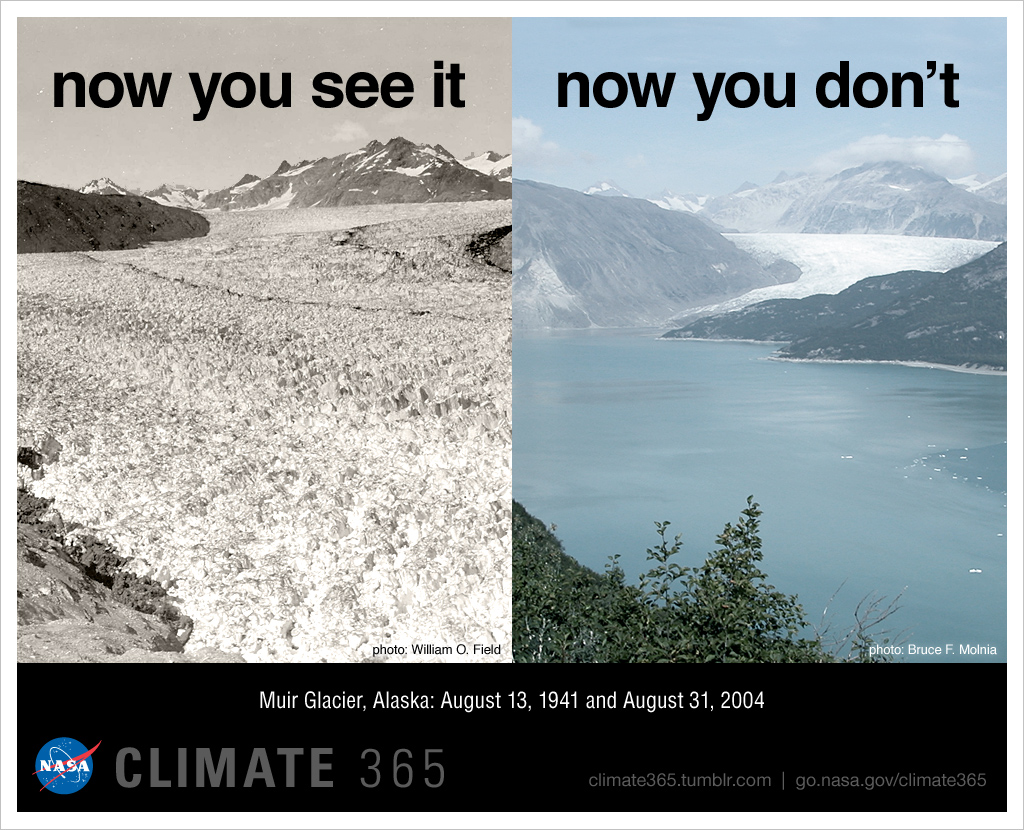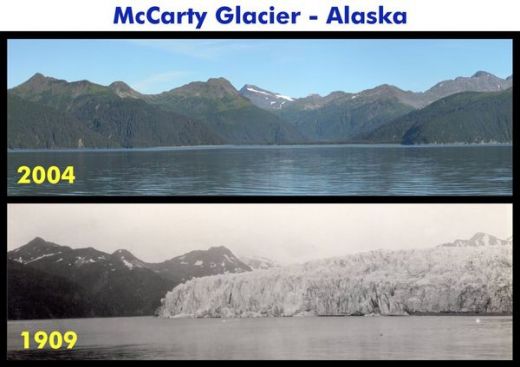
Two photos released by the Glacier National Park Archives of the Shepard Glacier in Glacier National Park, Mont., first in 1913, top, and then in 2005, reveal the dramatic change as the glacier has all but disappeared.
Humans the main cause of glacier melt
worldwide
Since 1990, humans have been the primary cause of melting glaciers worldwide, says a study out Thursday in the journal Science.
Researchers found that, in the past two decades, about two-thirds of the world's glacier loss was due to rising temperatures from the burning of greenhouse gases, along with land-use changes.
"In our data we find unambiguous evidence of anthropogenic (human-caused) contribution to glacier mass loss," said study lead author Ben Marzeion, a climate scientist at the University of Innsbruck in Austria.
Glaciers in North America and the Alps seem to be more prone to human-caused melt than others around the world, Marzeion reported.


The world's glaciers have been steadily melting since the mid-1800s, but before 1990, most of the melting - about 75% - had been due to natural causes.
"In the 19th and first half of the 20th century we observed that glacier mass loss attributable to human activity is hardly noticeable, but since then has steadily increased," said Marzeion.
Why should we care? Glacial ice loss has been a major cause of sea-level rise during the 20th century, to the tune of about an inch every two decades.
Additionally, glaciers store about 75% of the world's freshwater, and people living in arid climates near mountains often rely on glacial melt for their water for part of the year, according to the National Snow and Ice Data Center in Boulder, Colo.
Also, the study notes that "glacier retreat often leads to the destabilization of mountain slopes and the formation of unstably dammed meltwater lakes, increasing the risk of rockslides and catastrophic outburst floods."
Marzeion and his colleagues used computer models to simulate the evolution of most of the world's glaciers and could identify how much melting was natural vs. man-caused. After sifting out natural causes such as solar variability and volcanic eruptions, what was left was due to humans.
"This study makes perfect sense," said Pennsylvania State University glacier expert Richard Alley, who wasn't part of the research. "The authors have quantified what I believe most scientists would have expected."
Not all of the human-caused melting is due to global warming from the burning of fossil fuels, but climate change is the biggest factor, said Ted Scambos, a scientist at the National Snow and Ice Data Center.
A separate paper published this week by the Chinese Academy of Sciences reported that glaciers in Tibet were at their warmest in the past 2,000 years.
Yet another study, out Wednesday in the journal Earth System Dynamics, found that Antarctic glacial loss could increase global levels of sea water by as much as 14 inches this century.
Contributing: The Associated Press
Copyright 2014USAToday
Read the original story: Humans the main cause of glacier melt worldwide

No comments:
Post a Comment